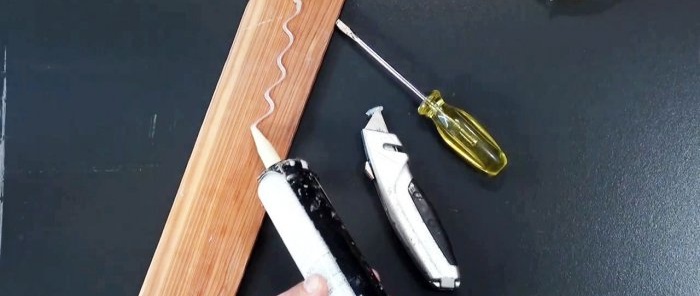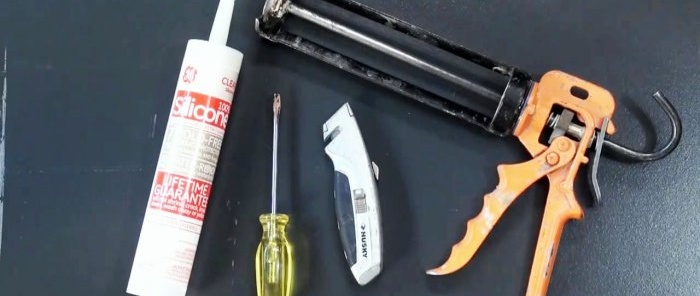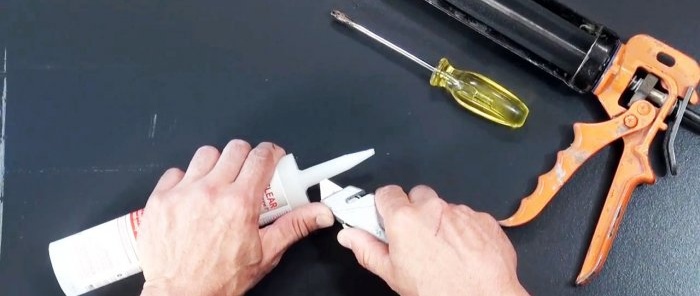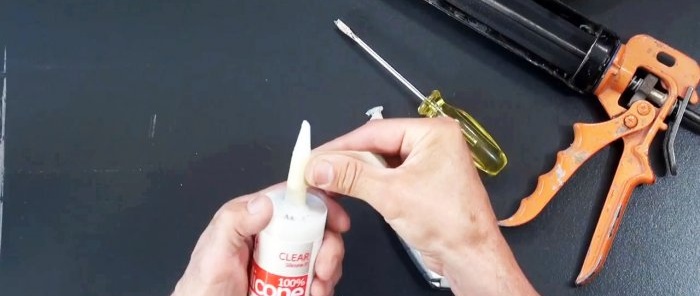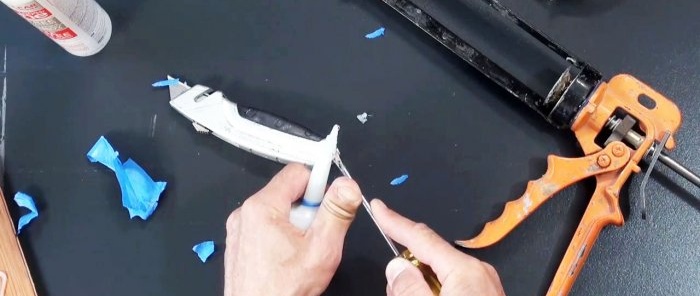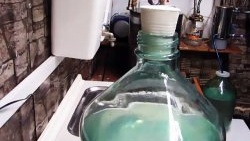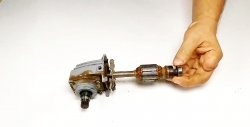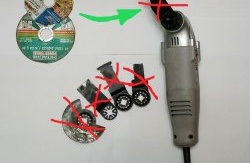How to remove dried cap from a tube nozzle and reuse the nozzle
If the silicone or liquid nails remaining in the can are not reliably isolated from contact with air, then they dry out in the cone of the plastic nozzle and form a very strong plug that cannot be squeezed out with any gun.
Reusing them after a while becomes problematic. But there is a fairly simple way out of this difficult situation, without the use of solvents or thermal methods.
In addition to a can of dried silicone or liquid nails in a nozzle, we will need the most common accessories and materials:
It all depends on the volume of frozen silicone. If the plug has formed only at the end of the nozzle in its spout, then this is the simplest case. Dealing with it is not difficult.
To do this, use the blade of a construction knife to cut the nozzle along the longitudinal axis from the base to the end and usually at the exit the blade plunges into a small plug and removes it from the nozzle at its tip.
We tightly wrap the nozzle with the cut with construction tape, leaving the hole in the spout open, and insert the can into the gun for squeezing out the sealant, and put it into action.
Perhaps, after some increased initial force, the further process of squeezing silicone out of the can will proceed without requiring additional force.
If the sealing of the silicone canister was not sufficiently reliable after cutting it, then the dried silicone plug can become large.
We remove the outer winding, cutting off the most durable parts with a knife. Then use a screwdriver through a longitudinal cut to impact the plug and remove it in one or two steps. Then everything is the same as the first time: we tightly wrap the nozzle with construction tape, place the can into the gun and squeeze out its contents without any difficulty.
Liquid nails, like silicone, can harden in the nozzle of the spray can if it is poorly sealed. If this happens, it doesn’t hurt to tap the nozzle with the shaft of a screwdriver to loosen the adhesion between the plug and the material of the nozzle, and also to determine the size of the plug by sound.
Then everything is the same as in previous times: a longitudinal section of the nozzle, removing the plug with a screwdriver, wrapping the nozzle with tape, placing the can in the gun and putting it into action.
Reusing them after a while becomes problematic. But there is a fairly simple way out of this difficult situation, without the use of solvents or thermal methods.
Will need
In addition to a can of dried silicone or liquid nails in a nozzle, we will need the most common accessories and materials:
- construction knife with replaceable blades;
- flat blade screwdriver;
- gun for squeezing out sealant;
- construction tape.
The process of cleaning the nozzle from dried sealant
It all depends on the volume of frozen silicone. If the plug has formed only at the end of the nozzle in its spout, then this is the simplest case. Dealing with it is not difficult.
To do this, use the blade of a construction knife to cut the nozzle along the longitudinal axis from the base to the end and usually at the exit the blade plunges into a small plug and removes it from the nozzle at its tip.
We tightly wrap the nozzle with the cut with construction tape, leaving the hole in the spout open, and insert the can into the gun for squeezing out the sealant, and put it into action.
Perhaps, after some increased initial force, the further process of squeezing silicone out of the can will proceed without requiring additional force.
If the sealing of the silicone canister was not sufficiently reliable after cutting it, then the dried silicone plug can become large.
We remove the outer winding, cutting off the most durable parts with a knife. Then use a screwdriver through a longitudinal cut to impact the plug and remove it in one or two steps. Then everything is the same as the first time: we tightly wrap the nozzle with construction tape, place the can into the gun and squeeze out its contents without any difficulty.
Liquid nails, like silicone, can harden in the nozzle of the spray can if it is poorly sealed. If this happens, it doesn’t hurt to tap the nozzle with the shaft of a screwdriver to loosen the adhesion between the plug and the material of the nozzle, and also to determine the size of the plug by sound.
Then everything is the same as in previous times: a longitudinal section of the nozzle, removing the plug with a screwdriver, wrapping the nozzle with tape, placing the can in the gun and putting it into action.
Watch the video
Similar master classes
Particularly interesting
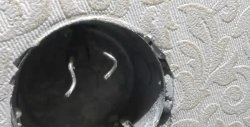
How to install a socket if there are short wires left
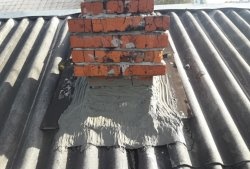
How to eliminate gaps between the chimney and slate
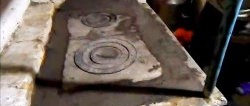
How to mix an ultra-reliable solution for the oven that does not give
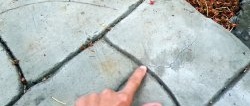
There will be no more cracks: What to add to concrete to make it
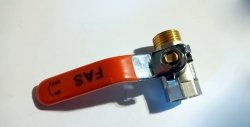
Never buy ball valves without checking with me

New technology for floor insulation with penoplex
Comments (0)

